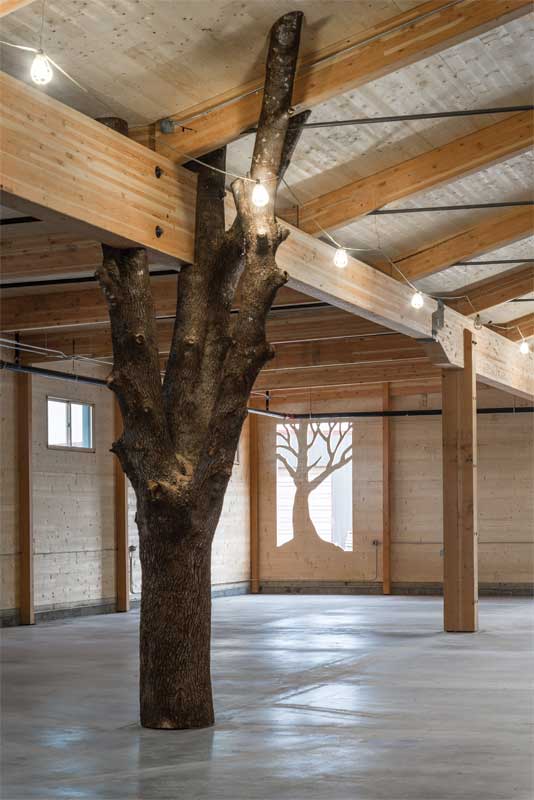
Photo © Scott Hemenway
The future
New Energy Works completed construction in August; the new building is already serving as a highly visible demonstration of thoughtful design practices, cutting-edge building materials, and sophisticated timber engineering. The woodworking team is finding it can craft more efficiently thanks to better temperature stability and abundant natural light, as well as the large, open spaces.
Will CLTs be the way of the future for commercial and residential construction? The hybrid combination of CLT, mass timber, and glulam proved efficient, aesthetically pleasing, environmentally responsible, and offered renewed design flexibility for this manufacturing facility. Along with reducing the nation’s carbon footprint, there is a possibility for job creation, use of otherwise unworkable wood, and growth of rural economies with the mass-timber movement. With greater awareness of the planetary impact of the building industry, mass timber may signify the revolution of the built environment.
Tom Lambert joined the New Energy Works Timberframers team as project manager for the company’s cross-laminated timber (CLT) build, guiding the project from groundbreaking to completion. He is co-founder of CreekSide Energy Solutions, an energy consultation company that specializes in energy modeling and evaluation for new and existing homes.
Jonathan Orpin was the lead designer for New Energy Works’ CLT project. He is an international presenter on the craft and sustainability of heavy timber construction, as well as a charter member of the Timber Framers Guild and founder of both New Energy Works Timberframers and Pioneer Millworks.
Megan Larmouth is communications director for New Energy Works Timberframers and Pioneer Millworks. She communicated the stages and progress of the CLT project to the press, public, and employees throughout the build. The authors can be reached via e-mail at joinery@newenergyworks.com.




